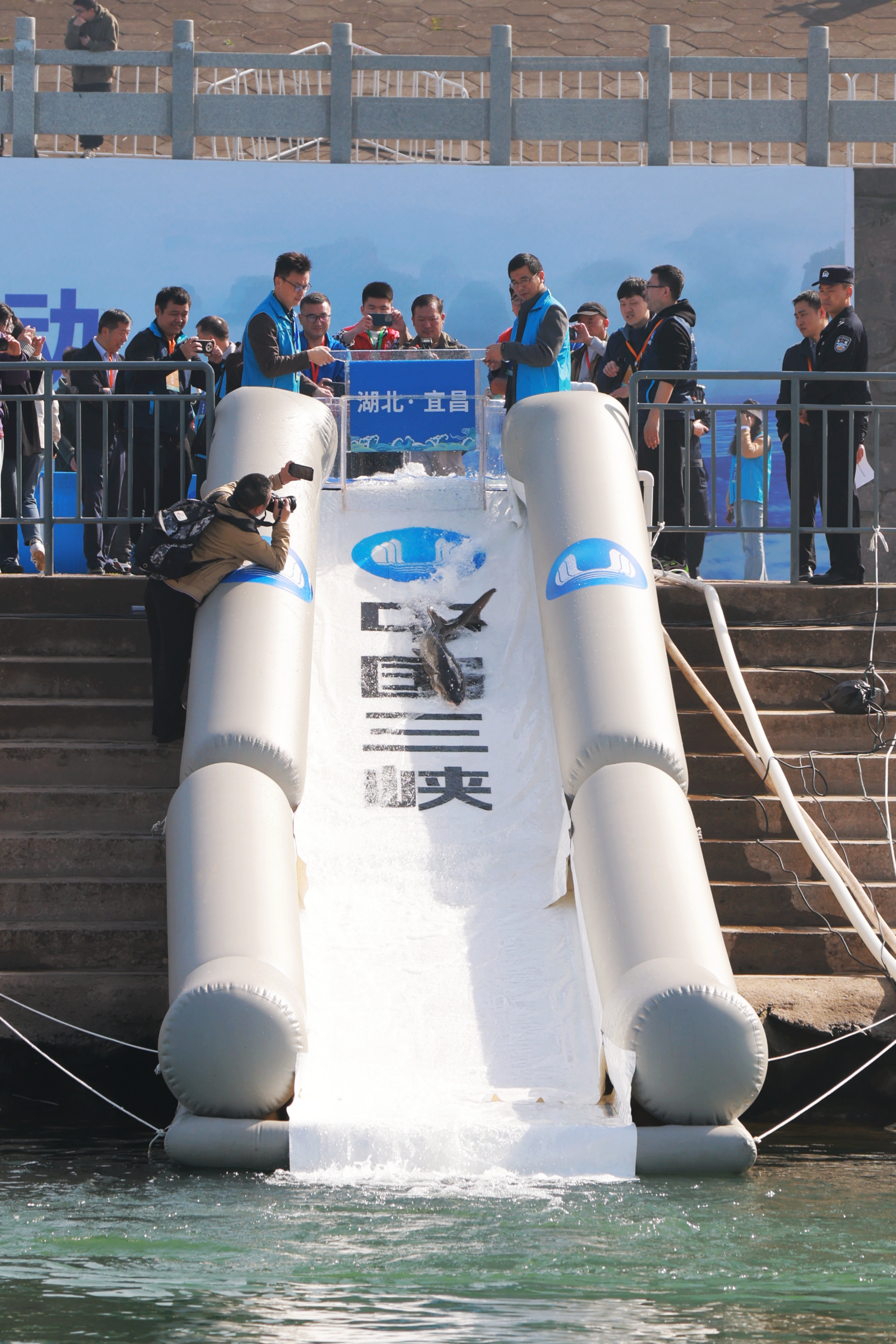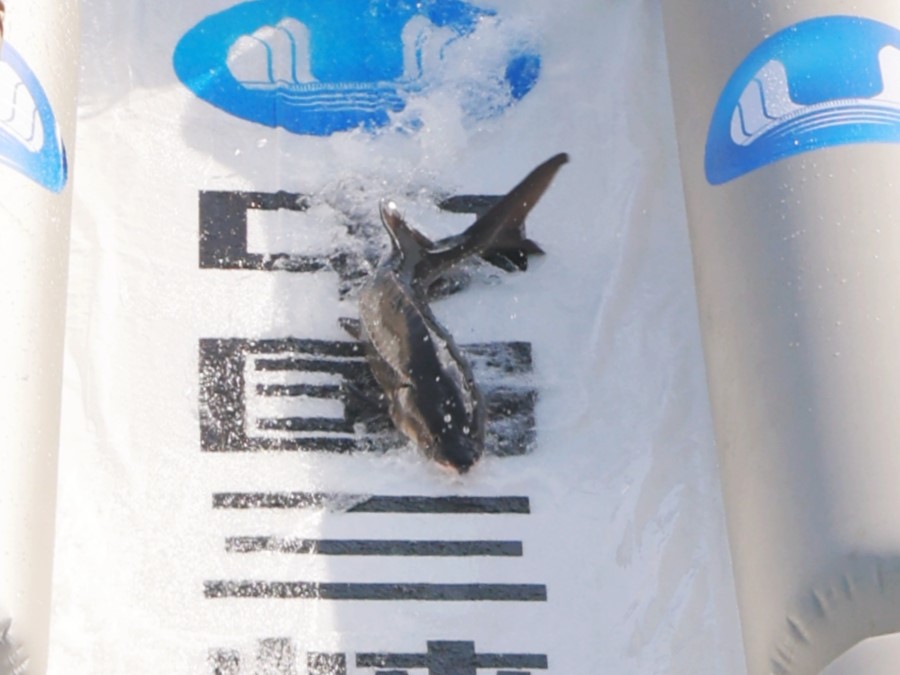Mass release of Chinese Sturgeons in Yichang marks conservation milestone
2024-03-28 21:03:33
Translator and English Editor: Chen Zai
Journalist and Photographer: Huang Xiang
March 28, 2024 will be the fourth Chinese Sturgeon Protection Day. In Yichang, over 200,000 Chinese sturgeons were released into the Yangtze River, returning to the embrace of their "mother."

The sturgeons released this time are all second-generation, and artificially bred. The oldest among them are 15 years of age, with 10 specimens born in 2009, while the youngest are just one year old.
The Chinese sturgeon is one of the oldest vertebrates on Earth with a history of 140 million years. It is a flagship species for the conservation of rare and endemic fish in the Yangtze River, holding significant value for scientific research and ecology. Due to human activities and environmental changes, the survival of the Chinese sturgeon faces severe challenges. In 1988, it was listed as a Class I protected species in China, and in 2010, it was classified as critically endangered by the International Union for Conservation of Nature (IUCN).

To protect the species, in 2020, the Chinese Sturgeon Conservation Association designated March 28 as Chinese Sturgeon Protection Day. Activities like releasing the sturgeons into the Yangtze River are organized along its banks. This year's event attracted many citizens and university student volunteers to participate.
To better monitor the migratory journey of the released Chinese sturgeons back into the Yangtze, researchers will use satellite tracking and sonar tagging. This will help provide a scientific basis for subsequent conservation efforts.
Journalist and Photographer: Huang Xiang
March 28, 2024 will be the fourth Chinese Sturgeon Protection Day. In Yichang, over 200,000 Chinese sturgeons were released into the Yangtze River, returning to the embrace of their "mother."

The sturgeons released this time are all second-generation, and artificially bred. The oldest among them are 15 years of age, with 10 specimens born in 2009, while the youngest are just one year old.
The Chinese sturgeon is one of the oldest vertebrates on Earth with a history of 140 million years. It is a flagship species for the conservation of rare and endemic fish in the Yangtze River, holding significant value for scientific research and ecology. Due to human activities and environmental changes, the survival of the Chinese sturgeon faces severe challenges. In 1988, it was listed as a Class I protected species in China, and in 2010, it was classified as critically endangered by the International Union for Conservation of Nature (IUCN).

To protect the species, in 2020, the Chinese Sturgeon Conservation Association designated March 28 as Chinese Sturgeon Protection Day. Activities like releasing the sturgeons into the Yangtze River are organized along its banks. This year's event attracted many citizens and university student volunteers to participate.
To better monitor the migratory journey of the released Chinese sturgeons back into the Yangtze, researchers will use satellite tracking and sonar tagging. This will help provide a scientific basis for subsequent conservation efforts.






